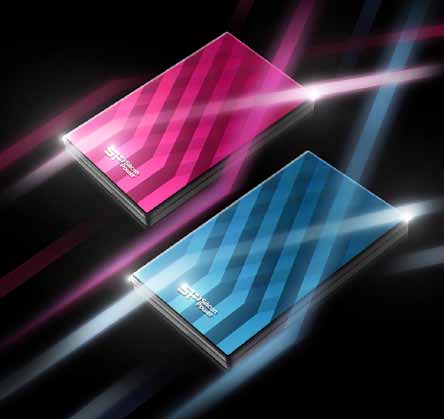
Personal storage devices (PSDs) have evolved over time and today offer consumers a myriad of choices that help them better organise, manage, share and protect their digital content. These devices allow you to keep a back up of your important files, documents and other sensitive data. Being portable, these also make information transfer easier to keep you on the go.
With larger capacities, faster transfer speeds and wide options of PSDs in the market, the buyers have numerous choices, though it makes it complicated for them to make a purchase decision.
This article is a brief guide on various PSD options in the market and deciding factors you should keep in mind while selecting your PSD.
The new-generation PSDs can be broadly classified into following categories:
Optical storage devices. CDs, DVDs, Blu-ray discs
Magnetic hard disk drives (HDDs). Portable hard disk drives
Solid state drives (SSDs). USB Flash drives, portable solid-state drives
Here in this article we are mainly highlighting the portable storage devices such as HDDs and SSDs.
The key difference between optical and magnetic storage media is how computers read and write information on them. The former uses light while the latter uses electromagnetism. It’s faster and easier to write data to magnetic storage media. Hard drives can store vast amounts of data and are called random access devices, which means you don’t have to search through the entire hard drive to retrieve a piece of data at the end of the disk. However, data stored on optical media tends to be more durable.
SSDs are data storage devices that use solid-state memory to store persistent data with the intention of providing access in the same manner as a traditional block input/output (I/O) hard disk drive.
SSDs are different from traditional HDDs, which are electromechanical devices containing spinning disks and movable read/write heads. SSDs, in contrast, use microchips that retain data in non-volatile memory chips and contain no moving parts. Compared to electromechanical HDDs, SSDs are typically less susceptible to physical shock, are silent, and have lower access-time and latency. These are, however, more expensive per GB. SSDs use the same interface as HDDs, thus can easily replace them in most applications.
Computer interfaces
There are various interfaces for a PSD to connect to the computer for transferring information.
Various connectivity options available these days are USB 2.0, USB 3.0, FireWire 400 or 800, or eSATA interface. USB 3.0 is the fastest interface available till date offering a speed up to 5GB/sec. The speed and efficiency of your PSD also depends on your system configuration.
Buying tips
There are various factors which you should keep in mind before investing in a PSD.
PC/laptop compatibility. Check out what fits into your laptop/PC. Also check your system configuration before making a purchase.

Read/write speeds. The chosen interface’s ability to read/write data with minimal latency affects the functioning of your PSD. It really depends on what your system is, and how much money you would like to spend. Firewire and USB are the two fastest interface types, with USB being the most commonly used interface.
Choose the size carefully. Bear in mind the amount of data that you are likely to cram in.
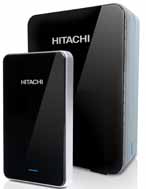
Hitachi Touro Mobile Pro portable drive
Features
• Company: Hitachi GST
• USB 3.0 compliant, USB 2.0 compatible
• Dimension: 80x126x15mm³
• System requirements: Computer system running with Windows XP, Windows Vista, or Windows 7TM and an available USB 3.0 or USB 2.0 port. Macintosh: Computer system running with Mac OS 10.5 or newer and an available USB 3.0 or USB 2.0 port; Intel processor-based Macs only
• Three-year Hitachi limited factory warranty
Price: 500GB – Rs 4408; 750GB – Rs 5299
WD My Passport Essential
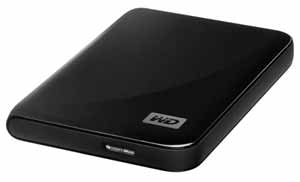
Features
• Company: Western Digital
• Dual compatibility with USB 3.0 (5Gbps maximum) and USB 2.0 (480mbps maximum) interface
• WD Smartware software
• Compatible with Windows XP, Windows Vista, Windows 7. Mac OS X Tiger, Leopard, Snow Leopard (requires reformatting)
• Dimensions: 15x83x110mm³; Weight: 140gm
• Three-year warranty
Street price: 500 GB – Rs 3350
Transcend StoreJet 25H3P HDD
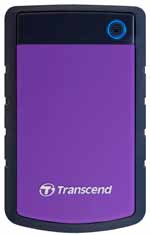
Features
• Compatibility with USB 3.0 and backward compatible with USB 2.0 with transfer speed of 90MB/s.
• Includes Transcend Elite backup and security software
• Compatible with Windows XP, Windows Vista, Windows 7, Linux Kernel 2.6.31 or later
• Mac OS X 10.4 or later (only USB 2.0 currently supported)
• Dimensions: 130.8×80.8×21.7mm³; Weight: 256gm
• Three-year warranty
Price: 1TB – Rs 9900
Kingston HyperX MAX 3.0
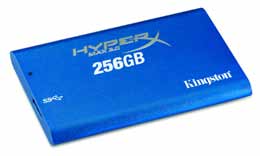
Features
• Company: Kingston
• USB 3.0 drive built with solid-state Flash components with sequential read speed of up to 195MB/sec and write speed up to 160MB/sec (compatible with USB 2.0)
• Dimensions: 73.49×118.60×12.00mm³
• Three-year warranty
Price: 256GB – Rs 16,679





